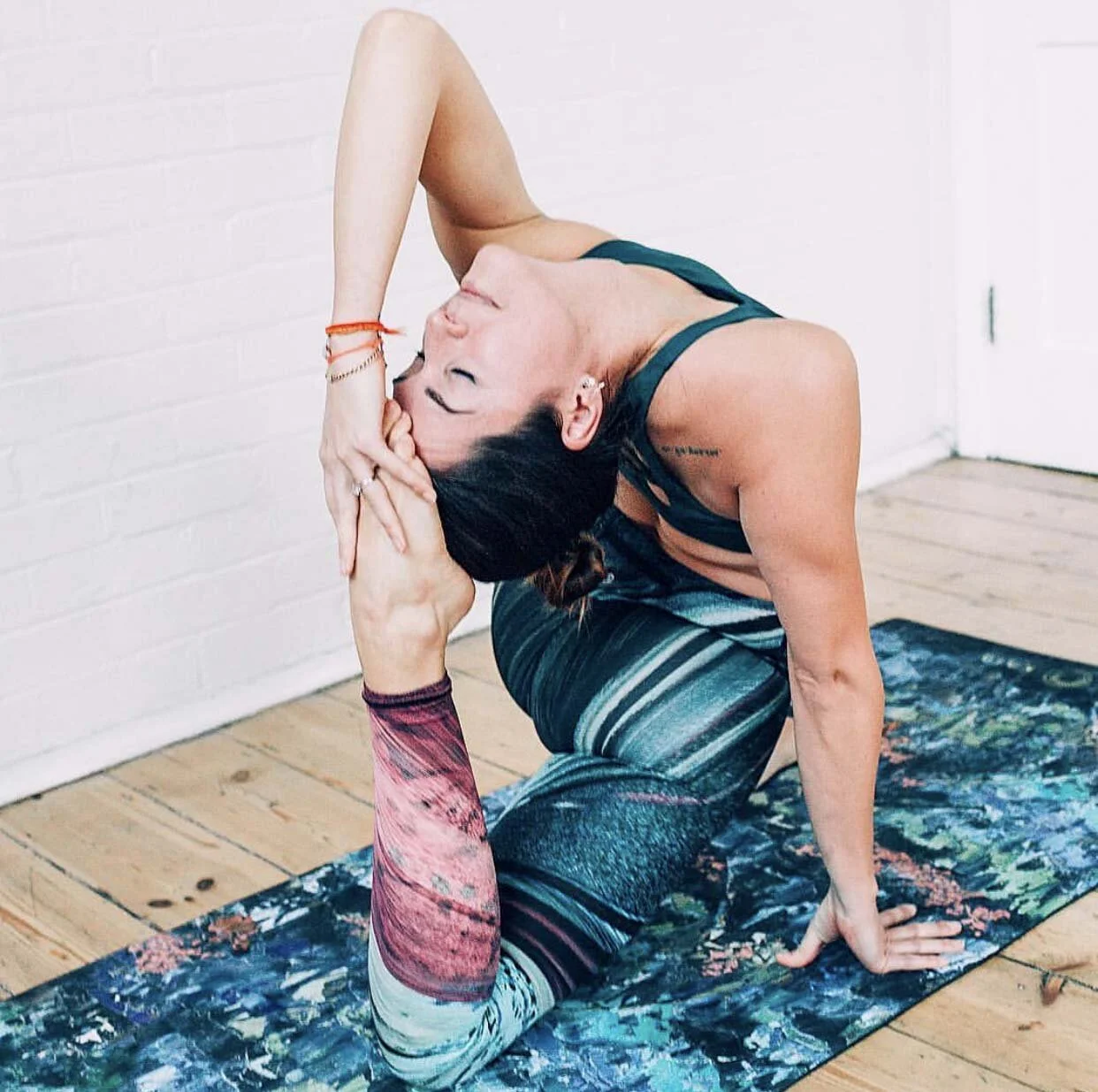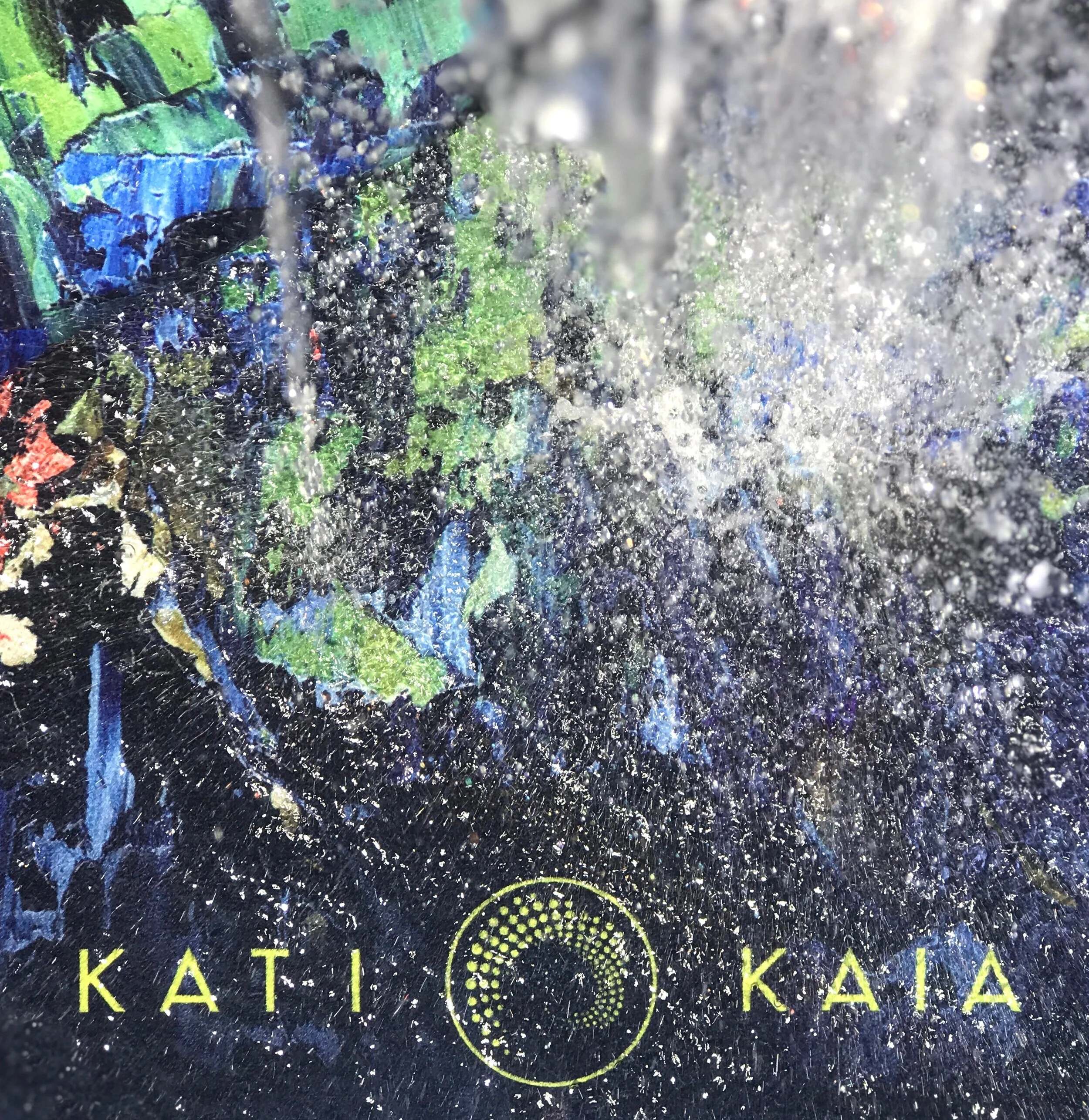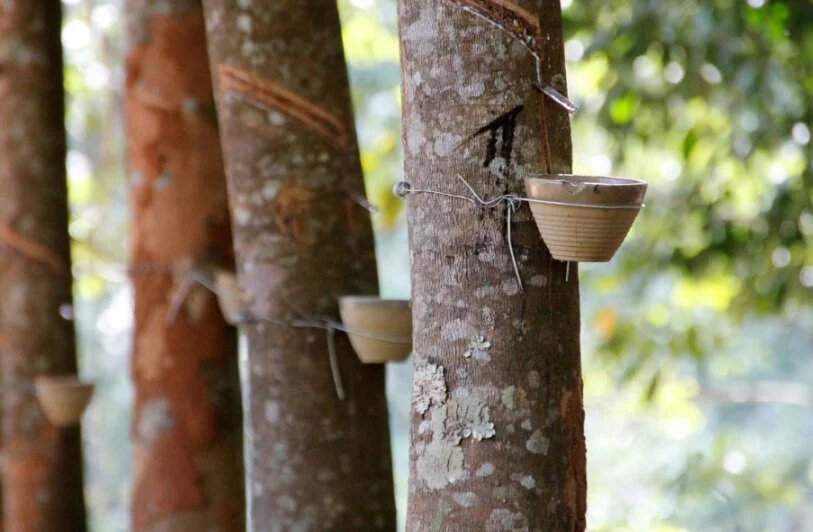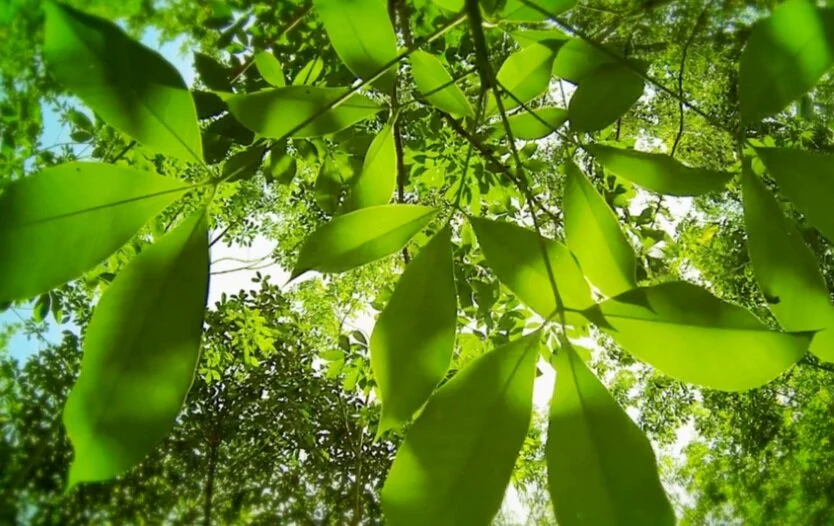WHAT YOGA MAT TO BUY? WHAT ARE YOGA MATS MADE FROM? WHICH ONE IS RIGHT FOR ME?
We get a lot of questions about our mats… well just about yoga mats in general, as we know there it’s a bit of a mind field out there for everyone. So… to try our best to help you, we are going to de-bunk, funk it up and answer some of your FAQs in one easy blog post! Let’s hope it helps you work out what might be right for you!

@mindfulsonder Yoga teacher Marial Whitmond, showing us how it’s done!
WHAT SIZE YOGA MAT IS RIGHT FOR ME?
Ok, so this is a bit of a tricky one, for us a little bit extra is better as we hate it when our feet and arms are hanging off the edges of the mat, so that’s why all our mats are 6ft in length (183 cms) and 68 cms wide. Standard yoga mats measure about 172 cms by 60 cms, which might be more than enough if you don’t mind or need that bit extra and perhaps you want to save on weight… so really it’s a preference, we like some extra space for our Asanas and for the taller or larger yogi the size of the mat can be very important.
WHAT IS A YOGA MAT MADE FROM?
Now this is an interesting one as yoga mats come in all sorts of types, natural or very much otherwise! If your mat is seriously cheap… I would take a look at what is inside it… the cheapest materials and mats on the market tend to be made from Plastic, Polymers, Polyvinyl Chloride (PVC), even ‘Eco-friendly’ TPE, which is a degradable type of plastic & rubber mix, which is arguably better than PVC, a chemical that, in it’s manufacturing, releases harmful toxins into the environment, a lot of mats are made from this. as an Eco friendly option.
Some of these Eco mats do not include latex either, which is important if you have an allergy. Eco-friendly yoga mats are usually made out of natural rubber, derived from a rubber tree, or from jute fiber, hemp or cotton. Our mats are 100% Natural Rubber base, which is topped with a ‘vegan suede’ grip topper. The topper is soft and protects you from the rubber base, which helps you with grip and allergies especially as allergies are often aggravated when we sweat. I have a latex allergy, I also cannot have plastic against my skin of any kind as it causes my skin to rash and brings on eczema when against my skin. Be sure to clean your mat regularly.
DO I NEED A YOGA TOWEL?
Short answer, No. Our vegan suede is absorbent and your sweat will enhance the grip, it activates the super grip layer more. If you are doing Bikram and you find you sweat out ALL your demons (it happens) you might want to invest in a yoga towel or just a bath towel to place to the side of your mat, for comfort. Our mats can simply be spritzed clean, wiped down or popped into the washing machine for a deep clean… which takes us nicely to…
WHAT YOGA MAT THICKNESS IS BEST?
Again this is very personal and takes a little trial... When your starting out a travel mat might be the best, ours is 1.7-2 mm thick, 100% Natural Rubber, so the rubber base really grips to the floor or surface of other mats. That gives you a nice base to start with, not too thin and then you can use provided mats in your local yoga studio underneath, this is an excellent way of playing around to see what thickness suits you and it still gives you your own hygienic top layer for all that sweat! Easy to wash and easy to pack for retreats at under 2 kgs weight.
Some people really like to feel the floor, so for that you could go even thinner to 1 mm, which is more like a yoga sheet or cotton rug would be good for them. Others (like myself) like some extra cushioning, which is important for joints so it doesn’t hurt when you are engaged or in plank or dog for a while. A thicker mat also gives you that extra luxurious feeling when your laying out for practice. We have talked to all sorts of yogis and yoga teachers about our cushioning, to get it right. It was especially interesting at The Om Yoga Show, London in October, which was great to get out and talk to everyone! We had been worried out mats were heavy, as the natural rubber does have a little weight compared to foam polymers and not wanting to sacrifice the natural base for a lighter plastic, PU or anything like that… but listening to yogis, for your everyday use mat, you need some weight and cushioning. Some of you came to us looking for a thicker mat as we have some of the thickest mats on the market from natural bases, you felt your 3.5 mm mats were just too thin for your needs. Our Gallery Yoga Mat is 4.5 mm cushioning, which provides you with enough thickness to not need to fold your mat and with the vegan suede topper so you have no need for a towel.

All Kati Kaia mats are machine and hand washable.
CAN I WASH MY YOGA MAT?
Yes of course! Simply pop into your washing machine drum on a cool cycle like 30 degrees, add some lemon juice to cut through the sweat and even a drop of organic tea tree can freshen it right up if you like. No need for detergent, unless it’s natural, detergent can break down fibres just like it does with our clothes, so best save them for your washing!
Then hang out to dry, in the fresh air is best and quick, but even on the rainiest of days over the tub will do just fine.

The Rubber Tree or Cao Su ‘Hevea Brasiliensis’
WHAT IS NATURAL RUBBER?
Natural rubber is tapped from the Rubber tree and is just that, from mother nature herself! The natural rubber industry is in the maturity stage of its life cycle, well established and regulated. Realising the urgent need to promote a shift toward more sustainable industrial development pathways, Vietnam’s government has paid special attention to the promotion of green industry.
The trees are grown for seven years before they can be carved for rubber. They are carved from the bottom up, allowing access to a white liquid-like substance, similar to sap in other trees. Instead of sap though, it’s rubber! The Sap (Latex) is collected in pots or coconut shells and emptied about every three hours once the pots are full and a new area is carved. The tree can be carved in many places on the bark, roughly taking about seven years to re-grow and the area can be tapped again. The trees usually live for about 30 years before they can no longer be useful, in which case they are then cut down and sold for lumber.
You can read all about the process of tapping rubber and our sourced plantations here.
We know natural rubber is a more expensive, heavier material to use and carry to class, but that’s why… it is natural! No plastic fillers have been used to lighten the mat. Such a small sacrifice to make to know that breathing in child’s pose is non toxic, and it’s just more comforting to practice on a beautiful, natural mat especially with something as pure as your journey with yoga.
CAN YOGA MATS BE RECYCLED?
Yes! Natural mats will bio-degrade, depending on the thickness and material of the mats this may be 8 months, it may take 10 years or more. But a better use for your tired out yoga mat is to take it to a donation station near you. So many people are displaced at the moment through persecution or war, they are really looking for anything to sleep on, tired out yoga mats are perfect for this! There are many grass roots organisations that are helping refugees with their plight.
We donate our samples to our local center for Calais. You can find more information on recycle for refuge here. We also have an interactive map for your local donation center. Don’t let it go to landfill, there are so many other uses for a tired mat, in the garden as a rug, the workshop for standing on and keeping those cold floors at bay, your local Women’s refuge center. Think Creative, as we like to say!
“We do not inherit the earth from our ancestors, we borrow it from our children.”
WHERE ARE YOGA MATS MADE?
Now, we can’t speak for all mats, but we can share our processes from our factory, which is based just out of Hangzhou in China. A lot of mats are made here. Our factory brings many jobs to the area, which is out of the major city, it is a very clean, high standard factory with health and safety and run by a family team. They are close to the market for Natural Rubber, which comes from Vietnam and is grown naturally and tapped over time. We have blogged about both our Elastic Forest and our inks and finishing processes here.

Sunlight through the leaves of the Rubber Trees.
Any other questions? Pop them in the comments below, we would be happy to take a look for you, or contact us, we always love hearing from you all!









0 comments